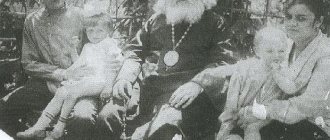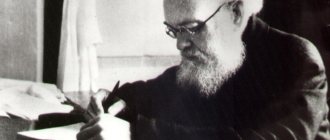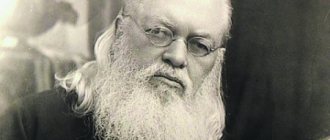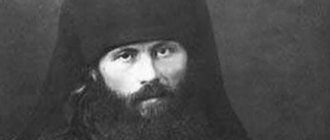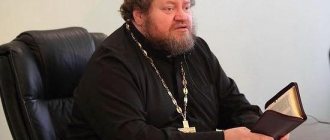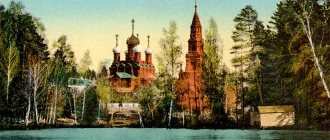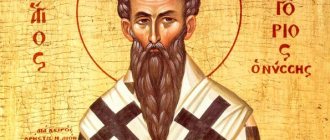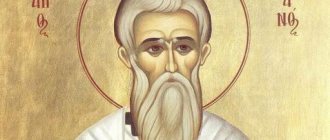At the Crimean department
Vladyka Luka arrived in Simferopol on May 26, 1946. First of all, he toured the 58 operating parishes of the diocese, making sure of the disastrous state of the churches that survived persecution, closure and war. Monastic monasteries were closed, among them the famous Toplovsky Monastery in the Crimean Mountains.
By mid-1955, there were already 49 operating Orthodox churches and houses of worship in Crimea, in which 53 priests served. In addition to the parishes of the Russian Orthodox Church, on the peninsula (according to state security agencies) there were 14 communities of Evangelical Christian Baptists (up to 1.5 thousand participants), up to a hundred Seventh Day Adventists, about 100 Old Believers, several illegal groups of Pentecostals, Khlysty, Tolstoyans, Jehovah's Witnesses, Jewish clerics. There were also groups of the “church-monarchist underground” and the “True Orthodox Church” (up to 30 participants)[4].
In Crimea, the scientist gave a course of lectures for doctors on purulent surgery, made 5 reports at the Crimean Surgical Society, personally operated and advised doctors. However, his lectures were disrupted, they demanded that he be prohibited from speaking in church vestments, and then his medical activities were completely banned. St. Luka conducted consultations at home, even after losing his sight (in 1956) he made unmistakable diagnoses.
An indicative case is the wife of a priest, Father John - the secretary of the diocese, Nadezhda Miloslavova. A number of doctors who examined her during her deterioration in health did not reveal anything serious and did not consider surgical intervention necessary. Archbishop Luke, having carefully examined the patient, stated that if the operation was not performed within two hours, the woman would die. The operation revealed a huge abscess in the abdominal cavity, ready to burst; the patient recovered[5]. The girl Galina Filina, who suffered from sarcoma of the brain, was cured by the intense prayers and kneeling petitions of Bishop Luke. Galina subsequently graduated from medical school, became a candidate of medical sciences and an employee of the Moscow Mendeleev Institute of Serums and Vaccines[6]. “It was God who healed you with my hands. Pray to him,” St. Luke the surgeon invariably said to the people he saved.
The Chekists recorded that the Crimean archpastor was deliberately bringing closer to himself and appointing to his parishes priests who had gone through the GULAG, and took these “authoritative and zealous ministers” into operational development[7]. Complaints from the Commissioner for Religious Affairs and fears from the security officers were caused by the desire of the ruling bishop to bring closer to him priests with pre-revolutionary experience, good spiritual education, who suffered from the oppression of the atheistic authorities. Among them, for obvious reasons (primarily due to the terrible physical losses of the clergy from illegal repression), immigrants from the western regions of Ukraine, primarily from the primordially Orthodox Volyn, predominated. By 1955, 10 such priests served in the diocese.
Among the bishop's entourage, the Crimean UMGB-UKGB was especially concerned about the secretary of the diocese, Archpriest Vitaly Karvovsky, who was also appointed dean of churches in the Simferopol region. A case was opened against V. Karvovsky (who was a priest of the UAOC during the war) (judging by the plan of the intelligence and operational work of the KGB, the case was one of the priorities of official activities), correspondence was secretly reviewed (revealing his contacts with priests who served time in the camps )[8].
True, it is worth taking into account the saturation of the UAOC with “nationalist-minded” priests, its cooperation with the occupation authorities and connections with the OUN underground, as well as the problematic sentiments of former Uniate priests who formally reunited with the ROC and their understandable sympathies for the insurgent movement. In 1957, in the Ukrainian dioceses of the Russian Orthodox Church there were, respectively, up to 500 former autocephalous and 1,173 Greek Catholic priests, with a total number of priests of 6,031. The example of I. Androshchuk, one of the former leaders of the UAOC in Volyn, an active underground member of the OUN under the pseudonym “Lev” was often cited ", sentenced to 20 years of hard labor in 1947, and became a priest of the Russian Orthodox Church after his early release in 1956[9]
In 1949, Bishop Luke began work on the second edition of Regional Anesthesia, which was not completed, as well as on the third edition of Essays on Purulent Surgery (published in 1955). He did not give up active preaching work. “I consider it my main bishop’s duty to preach about Christ everywhere,” he said at the Simferopol Cathedral on October 31, 1952. According to the archpastor himself, during 38 years of priesthood he delivered 1,250 sermons, of which 750 were written down and amounted to 12 thick volumes of typescript. In 1955, the archbishop was elected an honorary member of the Moscow Theological Academy, whose Council called the collection of sermons of Bishop Luke “an exceptional phenomenon in modern church and theological life”[10].
Against “spiritual hunger”
On September 8, 1943, Bishop Luke took part in the Local Council, which restored the Patriarchate and elected Metropolitan Sergius Patriarch of Moscow and All Rus'. In February 1944, the Patriarch elevated Vladyka Luka (who also became an archbishop and permanent member of the Holy Synod of the Russian Orthodox Church) to the chair of Archbishop of Tambov and Michurinsky. In February 1945, Patriarch Alexy I awarded the archbishop the right to wear a cross with diamonds on his hood.
Before the Local Council of January 1945, Bishop Luke was the only bishop who spoke out against the procedure for electing the Patriarch from a single candidate, and did not want to go to a reception with the Chairman of the Council for the Affairs of the Russian Orthodox Church, State Security Colonel G. Karpov, saying that he could come to the episcopate himself, “I don’t bow low.” As a result, the hierarch's participation in the Local Council was disrupted, and he himself fell ill with severe symptoms of poisoning.
Archbishop Luke perceived the thaw (albeit opportunistic) in the state’s relations with the Church as a chance to curtail the policy of state atheism. On July 15, 1944, he addressed a letter to the manager of the affairs of the Moscow diocese, Metropolitan Nikolai (Yarushevich) of Krutitsky, where he outlined his own program for revitalizing the activities of the Russian Orthodox Church and countering materialism[1]. In the country, he wrote, “hopeless religious darkness” reigns, and the people “are running wild in spiritual hunger.” The reasons for the “widespread of godlessness in our people and the society involved in science” were considered. They were offered the following measures to revive Christian preaching and life in the USSR:
– expand the opening of intact old churches and the construction of cheap new wooden churches (develop projects for such standard churches); – to organize the work of factories and workshops for the production of church utensils, candles, and icon painting workshops; - to replenish the clergy, in the conditions of a shortage of priests trained in seminaries, to conduct a search among the people for “simple and pure-hearted sheep of Christ’s flock”, giving these “simple priests” the necessary minimum of liturgical and theological knowledge; – open Sunday schools for parishioners over 18 years of age; – to organize a higher theological institute for the training of qualified theological personnel, for whom to make available the latest theological and religious-philosophical literature of the Catholic and Protestant denominations, as well as the study of “metapsychology” (a new science that studies “those manifestations of the human spirit that clearly belong to the field transcendental, but are ignored by official, materialistic science or even branded with the name of superstition"); - under the auspices of the church, to begin, “through the collective work of Christians - scientists of all specialties,” criticism of anti-religious literature, writing accessible literature for priests criticizing atheistic attacks on the Church; – prepare collections of the most striking lives of saints.
Archbishop Luke's letter caused outright alarm among the high leaders of the ideological sphere of the USSR. On August 2, 1944, the head of the Propaganda and Agitation Department of the Central Committee of the All-Union Communist Party of Bolsheviks, G. Alexandrov, forwarded the bishop’s letter to the Secretary of the Central Committee, G. Malenkov. The accompanying document stated that the letter "is of very great political interest." It was noted that the author “puts forward a broad program of revitalizing the activities of the clergy and the irreconcilable struggle of churchmen against materialism... The letter... shows how far the plans of some prominent figures from the clergy go”[2]. Apparently, after this, the Council for the Affairs of the Russian Orthodox Church, in fact, the state security agencies, was tasked with “dealing” with the inconvenient hierarch.
The anti-church unit of the People's Commissariat of State Security (NKGB) closely monitored the behavior of the authoritative hierarch. On May 4, 1944, during a conversation at the Council for the Affairs of the Russian Orthodox Church under the Council of People's Commissars of the USSR, Patriarch Sergius with the Chairman of the Council, Major General G. Karpov, the head of the Russian Orthodox Church raised the question of the possibility of moving Archbishop Luke to the Tula diocese, motivating the need for treatment of malaria. However, G. Karpov “acquainted Sergius with a number of incorrect claims on the part of Archbishop Luke, his incorrect actions and attacks.” The Patriarch was refused[3].
In a memo to the People's Commissar of Health of the RSFSR A. Tretyakov dated May 10, 1944, G. Karpov, pointing out a number of actions committed by Archbishop Luka that “violated the laws of the USSR” (hung an icon in the surgical department of evacuation hospital No. 1414 in Tambov, performed religious ceremonies in the office premises of the hospital before carrying out operations; on March 19, he appeared at an interregional meeting of doctors of evacuation hospitals dressed in bishop’s vestments, sat down at the chairman’s table and in the same vestments made a report on surgery and other things), indicated to the People’s Commissar that “The Regional Health Department (Tambov) should have given an appropriate warning Professor Voino-Yasenetsky and not allow the illegal actions set forth in this letter.”
Patriarch of Moscow and All Rus' (1945–1970) Alexy II was forced to hold conversations with the archbishop who was pestering the authorities. He valued Vladyka Luka and hoped to transfer him closer to Moscow. However, the end result of the pressure of the regime was the appointment of an archbishop to the Simferopol and Crimean See of the Russian Orthodox Church.
